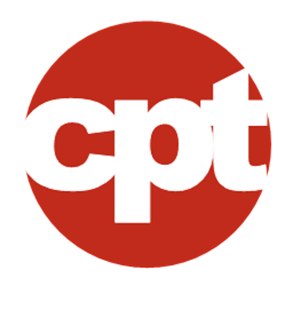
- Overview
- Types of CPT
- Part-Time vs. Full-Time CPT
- Eligibility Criteria
- CPT During Final Term
- Documentation Needed to Apply
- Detailed Training Description
- How to Apply for CPT
- U.S. Department of Homeland Security Address Notification Requirement
- CPT and Unpaid Internships
- CPT Online Certification Course
If you wish to accept employment off-campus, you should pursue Curricular Practical Training (CPT). CPT is defined as employment which is an integral part of an established curriculum, including: “alternate work/study, internship, cooperative education, or any other type of required internship or practicum which is offered by sponsoring employers through cooperative agreements with the school.” Source: [8 CFR 214.2(f)(10)(i)]. CPT is available only prior to the completion of your degree program and you must have a job offer at the time of application. CPT employment may not delay completion of the academic program.
Students must maintain full-time enrollment during fall and winter CPT. Full-time enrollment is 12 credit hours for undergraduate students, 8 credit hours for graduate students and 6 credit hours for Graduate Student Instructors and Graduate Student Research Assistants. Please note that Rackham 998 course is only 1 credit hour and is NOT an equivalent of full-time enrollment.
The full-time enrollment requirement means that most students have to limit their CPT during the academic year to local jobs or to working for their employer remotely, usually on a part-time basis. There are some exceptions, notably PhD students who have completed all their coursework and are now registered for dissertation/research hours only. However, such exceptions are rare. Although full-time CPT is allowed during the fall and winter semesters, the full-time enrollment requirement makes employment outside of the Ann Arbor area highly impractical in most situations.
There are two types of CPT: required and optional. Required CPT is when the academic program mandates practical work experience for all students in order to graduate. Optional CPT is work experience directly related to your field of study that is not required.
- You must be enrolled in a CPT course. Designated CPT course are set up and approved by the U-M Office of the Registrar. See the list of List of Required Internships and CPT Courses for Optional Internships.
- Notes regarding CPT course enrollment:
- If your CPT employment takes place during winter or fall term, you must be registered for the CPT course during that term.
- If your CPT employment takes place during the spring/summer term, you may register either in the preceding winter term or during the spring/summer term.
- If your CPT employment takes place in both winter term and the following spring/summer term, you must register for the CPT course for both winter and spring/summer terms.
- Be aware that adding a CPT course may have an impact on your tuition and fees.
- Failure to complete the CPT course will result in your falling out of legal F-1 status.
- You must have declared a major.
- Students who are engaged in thesis/dissertation work and have finished their coursework are still eligible for CPT, only if the CPT is an integral part of their thesis/dissertation or research.
- Students are expected to maintain physical presence on campus during fall and winter terms.
Part-time CPT: Employment for 20 hours or less per week is considered part-time. You must be simultaneously enrolled in classes full-time and be physically present on campus in order to maintain lawful F-1 status during fall and winter terms.
Full-time CPT: Employment for more than 20 hours per week is full-time. Please be aware that 12 months or more of full-time CPT will eliminate your eligibility for Optional Practical Training (OPT). During fall and winter terms, you must be enrolled full-time or have an approved Reduced Course Load (RCL).
To be eligible for CPT, you must:
- Have been lawfully enrolled on a full-time basis while physically present in the US for one academic year (i.e. two full consecutive terms) unless your academic program requires immediate participation for all students.
- Be in lawful F-1 status
- Have U-M approved health insurance
- Have a job offer
- Not be enrolled in an intensive English language training program
NOTE: CPT is processed and authorized term by term. Contact your academic department regarding your department’s specific guidelines and follow those guidelines for CPT applications. Please note that your department has discretion in recommending CPT.
During your final term of study, you must be enrolled at the University of Michigan and physically present on campus in Ann Arbor in order to comply with F-1 requirements. If you are enrolled part-time because you do not need a full course load to complete your remaining degree requirements, you must receive Reduced Course Load (RCL) authorization from the International Center.
If you are in compliance with these enrollment and physical presence requirements, then you may pursue CPT during your final term of study. Please note that the latest possible end date for CPT authorization during the final term of study is the last day of classes (before Study Days and Examinations), as listed on the official U-M Academic Calendar.
- CPT Authorization Request Form
- CPT Online Workshop Completion Email
- Academic/Faculty Advisor Recommendation Form for CPT
- If you are a Graduate Student (Master’s and PhD non-candidates) taking Rackham 998, your advisor must complete Part 1 and Part 2.
- If you are a Graduate Student in the College of Engineering taking Rackham 998, please use the College of Engineering’s internal form (see the Engineering Career Resource Center for more information).
- If you are a PhD Candidate, your advisor must complete Part 1 and Part 3. Additionally, your advisor must write an official letter recommending you for CPT and detail how the work is integral to your dissertation research.
- Detailed training description from your company/employer meeting all criteria outlined below
- Photocopy of your current I-20
- Photocopy of paper or print-out of electronic Form I-94(please click on the link for instructions).
- Print out of your unofficial transcript from Wolverine Access showing CPT course enrollment
Please ensure all documents are complete- the IC will not accept invalid or incomplete CPT applications.
Your employer or company must officially offer you a training opportunity. Ask your employer to write a Detailed Training Description. It must:
- Be written on the company’s letterhead
- Be addressed to you
- Include job title
- Provide a detailed job description (at least a few sentences describing specific duties, tasks, goals, etc.)
- Specify the street address where employment will take place (street, city, state, and zip code). If you will work remotely, the letter should specify this and list the company’s physical address.
- Specify number of hours per week you will work
- Specify start and end dates of CPT employment (keep in mind that CPT can only be authorized one term at a time).
A standard job offer letter may not contain the required information. We recommend your employer uses this sample Detailed Training Description. Please ensure your Detailed Training Description contains all details. If your current offer letter is missing only 1 or 2 details, we may accept one printed e-mail, addressed to you, directly from your employer containing the missing details.
- Plan head. CPT authorization takes 1-2 weeks for the IC to process and requires several documents that may take you time to compile.
- Take the CPT Online Certification Courseand print your CPT Online Workshop Completion Email
- Speak with your company/employer and obtain a Detailed Training Description
- Meet with your Academic or Faculty Advisor to discuss your CPT plans in detail. Show your advisor the Detailed Training Description, if they believe the training is integral to your curriculum, they may recommend you for CPT by completing the Academic/Faculty Advisor Recommendation Form. Your advisor may also help you enroll in a Registrar Designated CPT course (if applicable).
- Gather all required documentation. You may submit your CPT I-20 Request at the IC front desk during office hours OR submit via email to icenter@umich.edu. You must bring or submit all required documents. The IC will not accept invalid or incomplete CPT applications.
- An International Student and Scholar Advisor will review your CPT application. If all requirements are met, the advisor will approve your CPT and create a CPT I-20 showing this approval. Normal processing time is 1-2 weeks. Expect processing time to be 2 full weeks during peak request times such as April, September and January.
- You will receive an e-mail once your CPT I-20 is ready. No work, paid or unpaid, may take place until your CPT I-20 is printed.
- Be sure to sign and date your CPT I-20 and keep all I-20s permanently in your personal files.
If any details of your training opportunity change, please e-mail documentation verifying the changes to icenter@umich.edu so that we may update your CPT accordingly.
You are required to update your address in Wolverine Access within 10 days of any change while you are in F-1 status.
It is not uncommon for students to confuse unpaid internships with volunteering (and therefore conclude that no work authorization is necessary for engaging in an unpaid internship). However, there is a difference between volunteering and engaging in an unpaid internship. Volunteering refers to donating time with an organization whose primary purpose is charitable or humanitarian in nature, without remuneration or any other type of compensation. For more information about volunteering please see “Employment vs. Volunteering” section on the IC web site. Internships, both paid and unpaid, are primarily offered by the private sector and related to the intern’s major field of study. The U.S. Department of Labor has guidelines for those seeking an unpaid internship: https://www.dol.gov/whd/regs/compliance/whdfs71.htm
The following six criteria must be met for an internship to be considered a legitimate unpaid internship (and not employment below minimum wage, in violation of Department of Labor laws):
- The internship, even though it includes actual operation on the facilities of the employer, is similar to training which would be given in an educational environment;
- The internship experience is for the benefit of the intern;
- The intern does not displace regular employees, but works under close supervision of existing staff;
- The employer that provides the training derives no immediate advantage from the activities of the intern; and on occasion its operations may actually be impeded;
- The intern is not necessarily entitled to a job at the conclusion of the internship; and
- The employer and the intern understand that the intern is not entitled to wages for the time spent in the internship
CPT authorization is strongly recommended for all unpaid internships, whether the student does or does not need to provide employment authorization documents to the company. The F-1 regulations are written in such a way that CPT is an authorization to do practical training as part of the curriculum for the academic program, and as such is significant in more ways than simply for the employer to verify employment eligibility. CPT authorization is more than just permission to get paid.
You should have CPT authorization for unpaid internships for the following reasons:
- CPT authorization by the university serves to demonstrate that this practical experience is part of the curriculum.
- CPT authorization is a way of reporting in SEVIS the student’s activity, employment, and location where they are working and therefore maintaining their status.
- If ever a student is doing a job on an unpaid basis that someone would be hired and paid for, employment authorization in the form of CPT, OPT, etc. is advised.
- If the unpaid internship at some point changes into a paid one (or if your employer decides to compensate you for your work in any way – for example, give you a monetary gift), you won’t be able to accept the payment if your internship was not authorized as CPT. Please keep in mind that F-1 students cannot be retroactively remunerated or in any way compensated for work done in an unpaid internship if they did not obtain work authorization prior to when the work was performed.
Based on the above, we recommend that you apply for CPT authorization if you have an internship offer (paid or unpaid) that meets CPT eligibility criteria.
If the position is unpaid and for some reason it is not possible for you to obtain CPT authorization, please make sure that your prospective supervisor is aware of U.S. Department of Labor regulations concerning unpaid internships and that you have assurances (preferably written) to that effect before you accept the position. We also recommend that at the end of your internship you ask your employer to provide you with a letter confirming that there was no remuneration or any other type of compensation provided in any form during the dates you were participating in the internship. Please keep such a letter for your permanent records.


